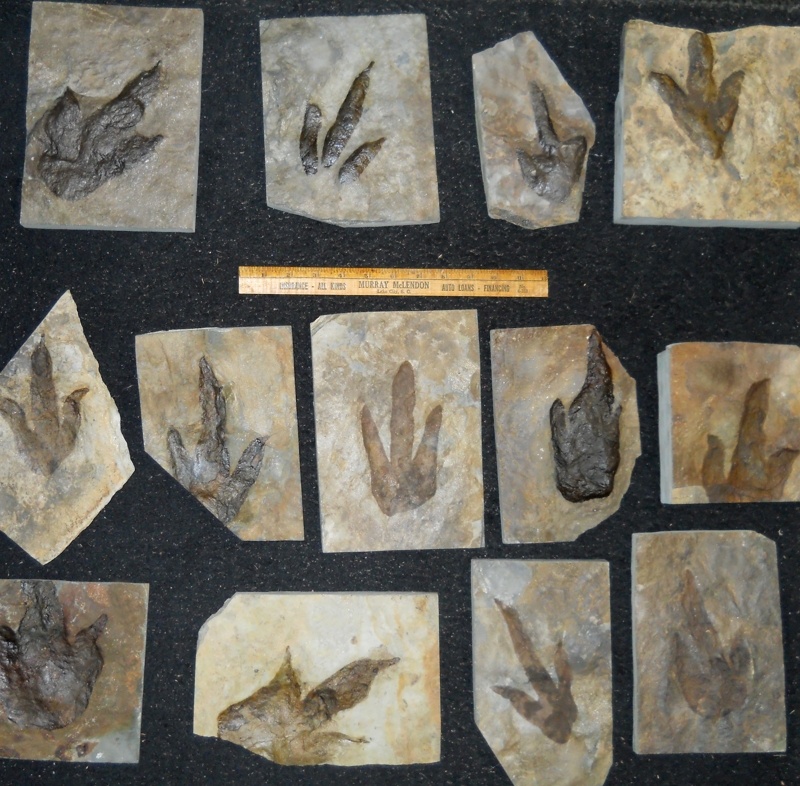Fossils - Great Flood Evidence
Fossil Footprints Give Evidence For Great Flood
It takes unique conditions for dinosaur footprints to be fossilized and preserved, especially in the huge numbers that are found. (See the previous two pages - 1 / 2). Let's look at what we observe today and see what it tells us.
- Tracks are found on flat bedding planes (flat areas of sediment).
- Vegetation is rarely found with dinosaur tracks.
- Turbation (many tracks on top of each other) is rarely seen. Sediment layers with tracks, one on top of another, is more common. At the quarry in Massachusetts they have dug through six feet of sediment layers, and they find tracks from the same type of dinosaur for the full depth. No turbation. If this track site were the shore of a lake, as claimed, there should be some turbation resulting from multiple dinosaurs walking over the same ground. Clear, individual tracks and trackways are an indication of very rapid burial, just about immediately after the dinosaur left the footprint.

- Dinosaur trackways tend to be straight, and heading in one local direction. When animals are relaxed and at a watering hole, they tend to wander around. When frightened, the tend to move in one direction. Track sites around the world have a common characteristic of the dinosaurs generally moving in one direction... moving away from something (rising water?).
- Standard methods of dating (based on evolution), frequently date dinosaur tracks as being >millions of years older than the first appearance of the dinosaur that made them.
The picture we get is not one of a lake shore, but of rapidly rising and falling water carrying a very heavy load of sediment, just as happened in the Great Flood. The evidence presented by dinosaur fossil footprints is more consistent with a catastrophic, global flood than it is with a lake shore.
